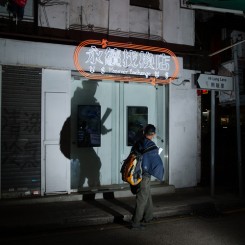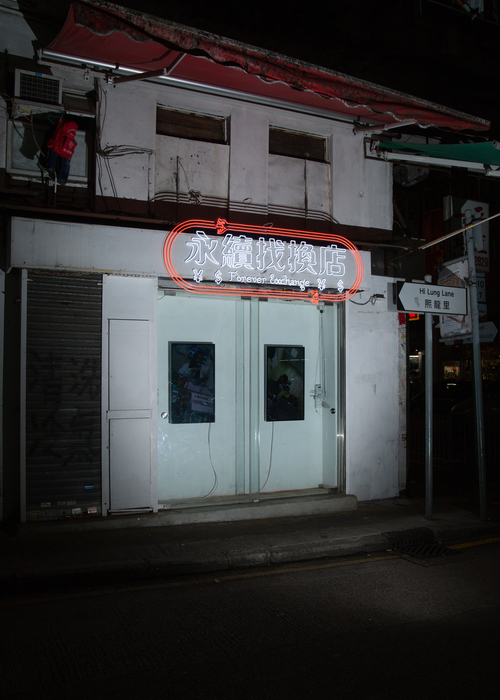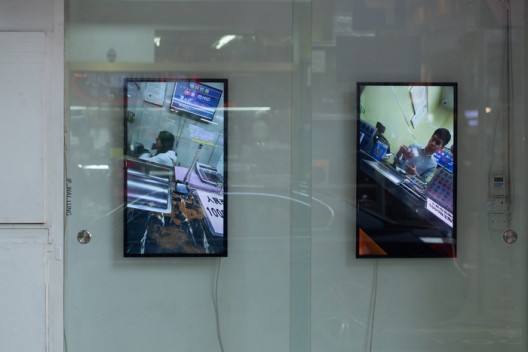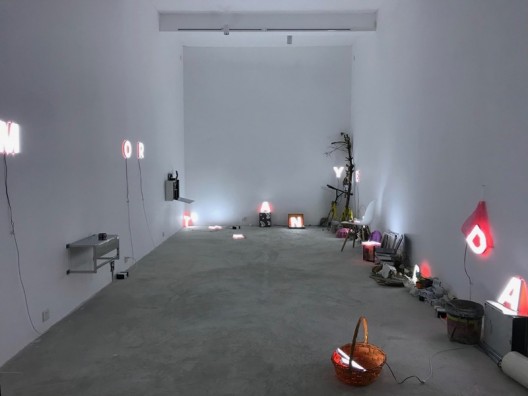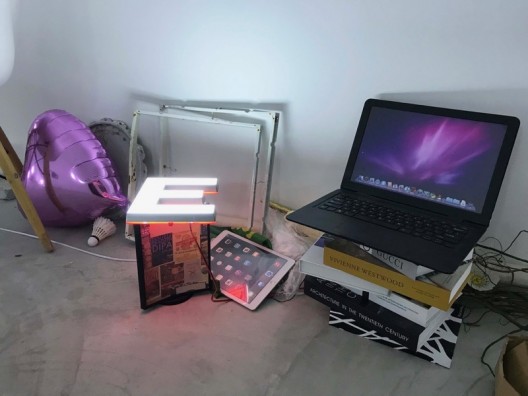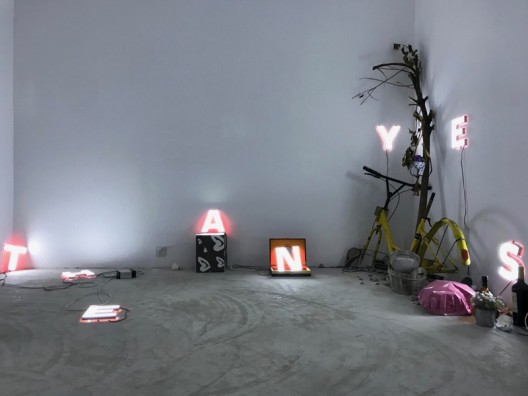by Ming Lin
“Forever X Change”, Précédée, Hong Kong, January 17 to Feb 2
“More Than Yesterday”, bottomspace, Guangzhou, January 6 to April 7, 2019
The first appearance of the ouroboros—the mythological snake that eats its own tail—appears in an ancient funerary text discovered in the tomb of Tutankhamen in 14th century BC. Across cultures, this act of autophagy has symbolized the cyclical processes of life and death, whose union can be seen formulating pre-modern conceptions of eternity. In the small alleyway of Hi Lung Lane in Yau Ma Tei, Kowloon, such iconography gains unexpected meaning cast in the bright LED awning hanging over a currency exchange shop. In the window display, two video monitors depict the trek made by hundreds daily, back and forth across the Hong Kong-Shenzhen border, at some point honing in on a pair of hands fervently exchanging Chinese yuan for Hong Kong dollars, and back again. “Forever X Change” at Précédée artspace is a currency exchange bureau where seemingly nothing is gained and nothing is sold.
The repeated task of exchanging minuscule amounts of cash between Hong Kong dollars and Chinese yuan may appear Sisyphean. In the context of Hong Kong, however, it’s political. A Special Administrative Region, Hong Kong is constantly negotiating its slow eclipse by the mainland (with whom it shares both its history and landmass); the latter seeks to rein in the territory’s existence as both a free market economy and bastion of democracy. For the Mainland-born, Hong Kong-raised artist, Ip Wai Lung, each day continues an ongoing exploration of identity on rapidly shifting and heterogenous terrain. Proposing that what distinguishes one side of the border from another might simply be a difference in currency, the artist considers the arbitrariness of such divisions while making a sarcastic jab at the economics that often take precedent over attitudes and lived experiences of a population. Hong Kong and China, the work suggests, are united precisely by that which sets them apart: In both identity and economy, it is a relationship of interdependence that drives and is driven by an imperative to keep things circulating.
But what happens to the surplus?
Nearby in Guangzhou, the inaugural exhibition of bottomspace, an artist residency and exhibition space experimenting with a format it describes as “semi-public”, gathers together the excesses of the immediate environment. “More Than Yesterday”, a solo exhibition of the work of Mathis Altmann, is situated adjacent to a rapidly gentrifying district, and it is in this context that the artist finds a microcosm through which to explore the residual effects of the economic opening and reform of China 40 years ago. Scattered along the wall are collected bits of debris—an abandoned, wheel-less bike from the now bankrupt Ofo bike-share app, which now litter the streets in dozens, a Burberry-plaid patterned ukulele, a Macbook. “If new money is made, it also requires itself being spent on new things”: the exhibition text reads in an aphoristic tone that resonates with the government slogans posted throughout the city to encourage good civil behavior. There is a growing paranoia of what might happen once consumption stops. Paradoxically, as we’ve witnessed more and more recently—despite talk of walls, borders, and ongoing trade wars—we get nowhere unless things keep moving.
